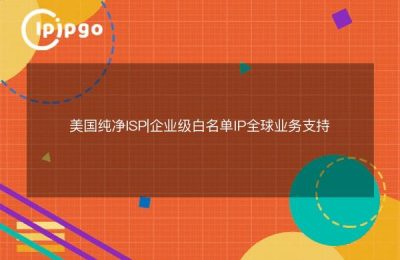
Why do you need a 'live' residential IP library?
Many people think that just find a proxy IP can solve the network problem, the result is to use either the speed of lagging or frequent drop. The real impact of the use of the experience of the core, in fact, lies in the IP resources of the"NATIVITY" and "Mobility". In IP-sensitive scenarios like e-commerce platforms and social media, only continuously updated dynamic residential IPs can avoid being recognized as machine traffic.
Take ipipgo's global residential IP library as an example, their IPs come directly from home broadband users, and each connection automatically switches to a different IP address in the same region. This model not only ensures the authenticity of IP attribution, but also prevents IPs from being flagged as anomalous through a real-time update mechanism. Especially when doing long time tasks, such as data collection projects that need to maintain a stable connection for several hours, the dynamic IP pool can automatically rotate resources without interrupting the process.
Three real-world application scenarios for dynamic IP
Scenario 1: Multi-account security isolation
Operating multiple accounts is the most fearful of correlation blocking. With ipipgo's dynamic home IP, each account can be bound to an independent IP segment. For example, if you operate 10 accounts at the same time, the system will automatically assign 10 home IPs in different cities and replace them with new IPs every 6 hours, thus cutting off the risk of correlation between accounts from the root.
Scenario 2: Real-time data monitoring
For price monitoring, public opinion analysis and other scenarios that require high-frequency access, fixed IPs are easy to be blocked. By setting the automatic switching rules of ipipgo, you can set the IP to be changed every 10 visits, which ensures the continuity of data crawling without triggering the anti-climbing mechanism.
Scenario 3: Precise Positioning Test
When testing the content of the page seen by users in different regions, traditional proxies need to manually switch regions. ipipgo supports automatic matching of IPs by city-level positioning, for example, if you need to test the effect of the display of Beijing, Shanghai, and Guangzhou at the same time, you only need to check these three cities in the background, and the system will automatically assign the corresponding dynamic residential IPs.
Five Key Metrics for Selecting Dynamic IP Services
| norm | Qualifying standards | ipipgo performance |
|---|---|---|
| IP purity | No record of blacklisting | IP libraries cleaned 3 times per day |
| Switching speed | <30 seconds | 15 seconds to switch |
| Area coverage | >50 countries | 240+ countries and territories |
| Protocol Support | Socks5/HTTPs | Full Protocol Support |
| concurrency | >500 threads | Customized solutions with no upper limit |
Configure Dynamic IP in this way to double the efficiency
In the ipipgo backend settings, it is recommended to turn on theIntelligent Routing Mode::
1. Set IP survival time in the range of 30-180 minutes
2. Enable the function of automatic rejection of abnormal IP.
3. Bind to a specific time zone and routine (e.g., U.S. IP matches local daytime hours).
4. Enable API interface to get real-time list of available IPs
Measurement data shows that the correctly configured dynamic IP effective utilization rate can be increased from 60% to 92%, and the task interruption rate is reduced by 80%. In particular, the opening of theAutomatic Rejection MechanismAfter that, the system will monitor the IP quality in real time and switch to a new resource immediately when the response speed of an IP exceeds 200ms.
Frequently Asked Questions
Q: How to choose between dynamic IP and static IP?
A: need long-term fixed authentication choose static IP (such as payment account), short-term high-frequency operation choose dynamic IP (such as data collection). ipipgo support two modes of free switching.
Q: What should I do if my IP is suddenly unavailable?
A: Enable "Second Cut Mode" in the background, when connection failure is detected, the system will automatically assign a new IP within 5 seconds while retaining the original task progress.
Q: How do I verify the authenticity of the IP?
A: Visit the detection page provided by ipipgo to view details of the current IP such as ASN number, registry, geographic location, etc. Residential IPs will be clearly shown as home broadband type.
Through the reasonable application of dynamic residential IP, not only can we solve the stability problem of network access, but more importantly, we can build an IP management system that meets the business needs. Choosing a service provider like ipipgo that has a huge amount of real residential IP resources is equivalent to obtaining a real-time updated global IP library, so that network requests become as natural and smooth as real user behavior.








